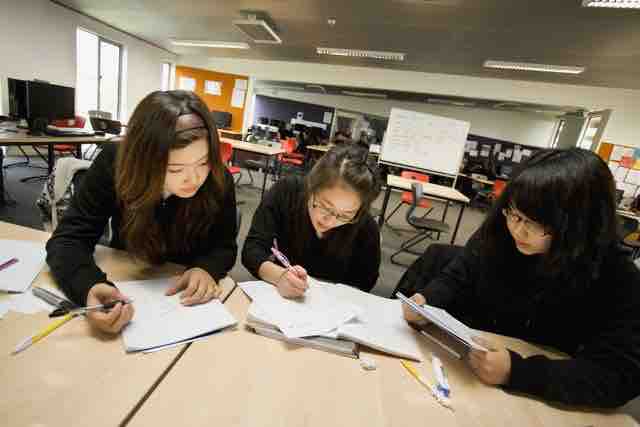Critical thinking consists of intentional, reflective thinking about a given set of information and determining not only what to believe about that information but also how to act on it. When you think of delivering a speech or a public address, you might not think that critical thinking plays a key role in the delivery of that speech. The key to a successful delivery lies in the speech's logical structure and organization of thought. Critical thinking is an important part of that organizational process.
Speeches typically serve one of four basic purposes: to inform, to persuade, to demonstrate, or to entertain. Constructing your speech with an effective thesis or main point and evidence to support that thesis requires you as the speechwriter to use critical thinking to determine how you'll make those points. Fully understanding the context of your speech is one of the most important elements of critical thinking in your speechwriting process.
Critical thinking consists of the following six key processes and actions:
- Clarify goals
- Examine assumptions
- Discern hidden values
- Evaluate evidence
- Accomplish actions
- Assess conclusions
In regards to public speaking, each of these is a process to undertake as you craft your speech.
Clarifying Goals
Before you begin outlining your speech, consider exactly what you're trying to accomplish. Are you trying to inform or instruct your audience on a particular subject? Do you seek to persuade them to feel a certain way about your topic? By considering your purpose for speaking, you can more clearly articulate your goals for the speech.
Examining Assumptions
As you pinpoint your thesis and main points, you'll begin to outline exactly how you plan to support your argument. In order to present a clear and well-reasoned argument, you'll need to make sure you have accurate and specific evidence to support your claims. By examining assumptions that may be made about your particular thesis, you can more clearly hone and refine the evidence you choose to present to bolster your case.
Discerning Hidden Values
Have you considered all the possible ways to present your main thesis and all the possible evidence you could include? Consider your thesis from opposing points of view. Using this critical thinking skill of discerning hidden values gives you a comprehensive way to approach your speech from all possible points of view.
Evaluating Evidence
Now that you know all the possible angles from which others can approach your line of reasoning, now it's time to select the best evidence to support your thesis. By evaluating evidence with a critical eye, you'll strengthen your argument by selecting the most compelling evidence to make your point.
Accomplishing Actions
Now that you've outlined your purpose, goals, and evidence, how exactly will you set out to accomplish those goals? Considering what actions you hope your speech will provoke will further guide you in the process of carefully selecting every word and sentence that brings you closer to realizing those goals.
Assessing Conclusions
Once you've written your speech, will your audience come to the same logical conclusion as you? Assessing the ways in which your audience will come to their own conclusions about your material will influence all the other pathways of critical thinking about your speech. You can then go back and tailor your evidence and content more appropriately so that your audience reaches the same conclusions you set out to present.
In sum, critical thinking is a vital part of the speechwriting and public-speaking process, a skill that you should work to develop in order to craft effective speeches.

Critical Thinking
Critical thinking is more than just the rote study of information and facts; it requires the thinker to reason reflectively about her beliefs and actions regarding those facts and information.